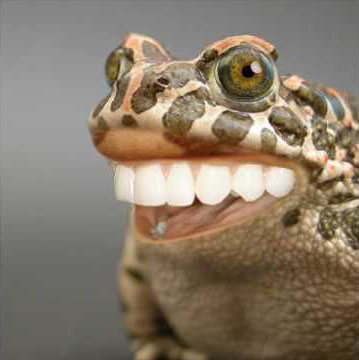spinnetrouble
- 0 Posts
- 33 Comments

 5·5 months ago
5·5 months agoIncredible, right?! Telling them you’re moving internationally speeds up account cancelation, but they’ll still keep you on the phone for like ten minutes!

 30·5 months ago
30·5 months agoWhen you cancel your Comcast, telling them you’re moving internationally ends things much faster than saying you’re switching providers.

 21·9 months ago
21·9 months agoWe need more alternatives to plastic, not the same number or fewer. Why wouldn’t we make sustainable materials from waste streams to replace the environmentally harmful ones that we banned ten years ago? Your preferences are one person’s preferences. You’re free to continue using apricot scrubs and baby oil, nobody’s trying to take them away from you. However, I would really like to find an environmentally sound, no-fossil-source, physical exfoliant with greater uniformity than the ones you like. (As an aside, milled pits, seeds, and shells (like nut shells) aren’t good exfoliants for human skin. They’re effective scrubbers, but the milling process leaves a lot of points and jagged edges in the resulting product which causes small tears in the skin barrier, reducing its ability to keep your insides safe from the outside.)
It kind of sounds like you’re neglecting the need for continuing innovation in materials science and engineering. We’re not just talking about replacing the horrific plastic microbeads in cosmetics, we’re talking about doing the work to develop entirely new materials that could potentially be used across a wide range of industries. Relying on pits and shells is definitely not the way forward here when we could be developing replacements for plastic wrap and styrofoam using stuff like food waste, fungi, and seaweeds.

 10·10 months ago
10·10 months agoStarch is a polymer. Cellulose is a polymer. Chitosan is a polymer, as is chitin. They’re just materials made of long chain, repeating units. One of the ways we can “fix plastic” is by making materials that have similar properties out of naturally-derived stuff that has nothing to do with fossil sources, like plants, arthropod shells, and fungi. We leave a LOT of possibilities just lying around in food production waste streams. This is exactly the same as “replacing plastic,” and the only real difference is which version writers like to use in their articles.

 4·10 months ago
4·10 months agoI’ve been playing so much Hardspace Shipbreaker. I’ve been a lot more dedicated to salvaging old ships than I have in actual career positions. Being a vacuum welder is awesome!

 17·10 months ago
17·10 months agoBallionaire is a pretty great stoner game. It’s a pachinko roguelite–excuse me, autobonker

 9·1 year ago
9·1 year agoCostume Quest

 15·1 year ago
15·1 year agoNow we know where reddit took their profit strategy from

 48·1 year ago
48·1 year agoShit, some of them charge the authors to publish.

 4·1 year ago
4·1 year agoI’ve been playing No Man’s Sky since they released the 5.0 content update. It’s made a huge difference in the look and feel of the game with things like modeled weather and oceans, and I’ve recently learned that sentinel attacks stop after you blow up the freighter they warp in.

 71·2 years ago
71·2 years agoThat’s really incredible stuff, especially given how not-fun that part of the game was 😅

 2·2 years ago
2·2 years agoIt probably is still legal, but it’s not something I’ve looked for in like a decade. We do have products that use ground kernels, but those aren’t good to use on skin–the milling process doesn’t produce uniform particles and the pointy bits tend to compromise the barrier skin provides with very small tears.
I completely agree that plastic isn’t necessary for good soap, I just like it. I would definitely buy soap made with ecologically responsible plantstic at least once.
More importantly, using safer, scalable, completely biodegradable, algae-based polymers opens up so many more options for single-use products while simultaneously improving environmental quality. Farming algae and seaweeds removes a lot of contaminants from the ocean, like agricultural fertilizer and solid waste runoff. If we can truly scale up ocean farming responsibly, it’ll be its own “teal cascade” in which the benefits multiply with each step in the process.
-
Farming algae/seaweed doesn’t require the use of inorganic fertilizers when you grow them alongside shellfish like oysters, clams, and scallops
-
Increased protein production through shellfish reduces reliance on agricultural livestock for meat (which is incredibly damaging to the environment)
-
Algae/seaweed can replace fossil carbon in fertilizers and plastics, and reduces cattle methane emissions by 20% or more when added to their regular feed
At each step, we can take more and more petroleum out of the equation just by using methods that are better than sustainable, they actually remediate existing harm.
Plus, I get my scrubby soap back.
-

 5·2 years ago
5·2 years agoI cannot possibly be the only person who misses the soap with the plastic bits in it. If they could do that without the environmental damage (I’m looking at you, Great Lakes ecosystem), I’d be into it

 51·2 years ago
51·2 years agoPart of me agrees with you; part of me is yelling, “Yeah? Many? Name five!” (Admittedly, that’s the American part and it’s kind of an asshole.)

 8·2 years ago
8·2 years agoI feel like IT could yell at OP for a little bit, but would ultimately have to stare the fact that they allowed non-privileged users to just change the operating system square in the face. Like holy hell, 500 employees and anybody can just be like, “Hey, maybe I’ll make a major OS change today because why not?” What else are they letting happen?!

 6·2 years ago
6·2 years agoYeah. Cats are really, really good at making it clear they understand when you’re calling for them and they’re choosing not to respond. I figure it’s fair; there are plenty of people I wouldn’t cross a room to talk to, either

 6·2 years ago
6·2 years agoI interned with a hematologist who was incredibly excited to show me a slide of hairy cell leukemia, the one case he’d seen in his career (like 20 years by then). That was just a microscope slide, I can’t begin to imagine how bad the loss of research samples would be on someone.

 17·2 years ago
17·2 years agoThe failure was in supplying nitrogen to an array of 16 freezers. Unless samples were split and stored in different arrays without the same coolant source, they’d still have lost everything.
It would be easy enough to create multiple sample sets to be stored that way, but it’d add an extra variable researchers would need to account and test for in their work as well as reducing sample capacity by at least half. A place as mighty and prestigious as the Karolinska Institute probably has a ton of graduate researchers, too, and everybody knows those people just graduate and leave all their shit behind without clearing out old samples.
The whole thing is heartbreaking.
It’s a bad title. We’ve known about kleptosomes for a while, but this study talks more about how it works: how the stolen organelles are maintained by the animal and used as an energy source when there’s no food. (Interestingly, when they start to break down the commandeered chloroplasts, the plasts degrade like they do in nature, leading to a color change for the slug!)